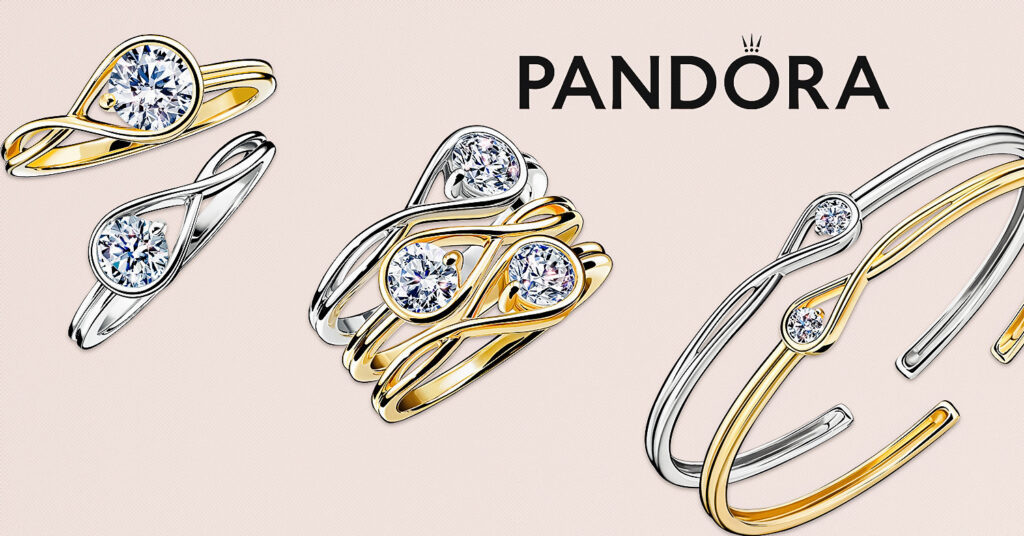Danish jewelry maker Pandora is moving away from mined stones in favor of lab-grown diamonds.
The world’s largest jeweler will now use diamonds made in laboratories, signaling a critical move by the fine jewelry industry to recognize growing trends among younger consumers choosing sustainable and ethically made jewelry, or eschewing diamonds altogether.
”For millennials in particular, the awareness of what a lab-created diamond is significantly higher than with the older generation, so it’s a matter of education as well,” Pandora CEO Alexander Lacik told Bloomberg. “They are more concerned about sustainability aspects.”
The lab-grown diamonds will be featured in the company’s newest collection, Pandora Brilliance. It will be the company’s first collection to feature lab-grown diamonds. Pandora is launching the collection—which includes bracelets, rings, necklaces, and earrings—exclusively in the UK on May 6.
The move follows Pandora’s decision last year to end its use of mined gold and silver by 2025. In lieu of mined gold and silver, the company will make its jewelry from recycled metals.

What’s Wrong With Diamonds?
According to market and consumer research firm Statista, approximately 142 million carats of diamonds were mined in 2019.
Diamonds, and jewelry in general, hold a sentimental value for many. However, the extraction of diamonds—as well as gold and silver—from the Earth can be fraught with environmental and human rights issues.
In 2015, approximately half of the world’s diamonds were mined in African countries—such as Botswana, Sierra Leone, the Democratic Republic of the Congo, and Angola. In these countries, working conditions are incredibly poor and children are often employed because they’re regarded as “cheap” sources of labor.
Beyond being a human rights issue, diamond mining is also bad for the environment. The diamond industry is known for causing deforestation, soil erosion, and destroying local ecosystems. In order to extract the minerals, forests are cleared and soil removed. The surrounding soil and water can become polluted. Important natural resources are also required during the process, including water, which is scarce in Africa. The energy sources used during the mining process—electricity, fuels, etc.—are also highly pollutive, releasing harmful greenhouse gases into the air.
The social and environmental implications are particularly prevalent as far as blood diamonds are concerned. Also known as conflict diamonds—blood diamonds are defined by the United Nations as “any diamond that is mined in areas controlled by forces opposed to the legitimate, internationally recognized government of a country and that is sold to fund military action against that government.” The mining—which often uses enslaved laborers—is controlled by rebel forces in order to fund wars.
There is no evidence to implicate Pandora in the use of blood diamonds; however, the brand’s ethics have been called into question in the past.
In 2018, Human Rights Watch published a report, called The Hidden Cost of Jewelry, that criticized major jewelers for not doing enough to guarantee their supply chains were free of human rights abuses. It assessed Pandora’s responsible sourcing policies as “moderate,” stating that the company had taken “some important steps” towards responsible sourcing.
In a follow-up 2020 report, Human Rights Watch revealed that Pandora’s ranking had moved to “strong,” and the company “had taken significant steps toward responsible sourcing.” None of the jewelers it reviewed received the highest ranking of “excellent.”

What About Lab-Grown Diamonds?
Pandora sells 85 million trinkets a year, about 50,000 of which are diamonds. It plans to launch its collection globally next year. In 2022, it will also completely end its use of mined diamonds.
“The need for sustainable business practices is only becoming more important, and companies must do their part in response to the climate crisis and the depletion of natural resources,” Lacik told Lifestyle Asia.
Johan Melchior, Pandora’s Director External Relations, Corporate Communications, tells LIVEKINDLY in an email that the company aims to bring lab-grown diamonds to consumers at a lower price than what the industry currently offers. “We can do this by using lab-created diamonds, which are identical to mined diamonds but grown above ground,” he explained.
Lab-grown diamonds are physically and chemically identical to that of a mined diamond. While diamonds are formed deep in the Earth’s mantle by extreme heat and pressure, lab-grown diamonds are forged similarly—using intense heat and pressure—only with machines. The resulting stones are ranked and rated the same way traditional diamonds are characterized—by cut, color, clarity, and carat.
There is debate as to whether lab-grown diamonds are actually more sustainable as it’s difficult to quantify their carbon footprints. However, Pandora states the products in its lab-grown diamond collection are carbon-neutral certified. According to Bloomberg, the diamonds are grown from carbon using more than 60 percent renewable energy. Pandora aims to use 100 percent renewable energy at its crafting facilities next year, achieving carbon neutrality by 2025.
“We consider sustainability across our business, from how we craft our jewellery to the workplace we offer employees,” Melchior adds. “Reducing what we take from the planet, protecting the environment and treating all stakeholders well is key to Pandora’s business success.”
(Updated May 6, 2021)


